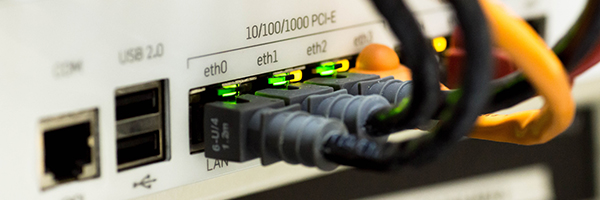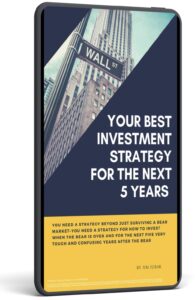
May 15, 2025 | Daily JAM, Short Term, VIX, Volatility |
The CBOE S&P 500 Volatility Index (VIX) dropped another 4.24% today to 17.84. I think, once again, the financial markets have become way too complacent about risk. And so it’s time to buy Call Options on the Vix “fear index,” betting that at least one of the many potential volatility events on the horizon puts some fear back into the markets.

May 9, 2025 | Daily JAM, Volatility |
22.53. That was the close on the CBOE S&P 500 Volatility Index (VIX) today. It’s safe to say that stock market volatility is way down. Back on April 21, the “fear index” was at 34.21. On April 8, at the bottom of the turmoil that followed on the April 2 tariffs, the index hit 52.33. But even before that spike, fear had been climbing among investors to 27.86 on March 10 from the very complacent 16.43 on January 31. That was substantially below the 10-year average for the VIX at 18.66. So now the question is how low the VIX will go. And when will it be time to buy VIX Call Options again on a bet that volatility will return.

April 28, 2025 | Daily JAM, VIX, Volatility |
Today, Monday April 28, I’m selling my last two Call Options on the VIX, the CBOE S&P 500 Volatility Index. Not because we’re done with volatility. No way. I expect lots more volatility in the weeks and months ahead. And I expect to put this trade on again. But because these two options expire on May 21

April 23, 2025 | Daily JAM, Morning Briefing, Short Term |
Despite the rally on Tuesday and Wednesday, the S&P 500 Index is still down around 4% since April 2, the day President Donald Trump announced his tariff plans. Where do stocks go from here in the short term? Depends on the headlines on tariffs and the Federal Reserve, I’d say But the trend in volatility is clear. Stocks are swinging wildly day to day. Since April 2, the Standard & Poor’s 500 has posted five declines of more than 2% and two gains of more than 2% in just 14 sessions.

April 7, 2025 | Daily JAM, Videos, VIX |
Today’s Hot Money Move is The Volatility of the VIX. I’ve been playing the VIX (the CBOE S&P 500 Volatility Index) as a hedge against market fear, and right now, it’s showing a clear pattern tied to tariff anxiety. Back in January, I bought VIX options when the index was sitting between 14 and 16—near its long-term average of 15 to 17—with strike prices at 20 to 25. Lately, these options have been swinging hard, jumping 30–40% in value before pulling back and then rallying again. The reason? Investors panic ahead of tariff announcements, driving the VIX up as they hedge. But here’s the pattern: once the tariffs are actually announced, the VIX drops as relief sets in. For active traders, this is a short-term play—buy into the fear, sell into the relief. Just remember: these patterns hold until they don’t, so keep a close eye on it if you’re going to make these plays.

April 3, 2025 | Daily JAM, Special Reports, Volatility |
Today the Standard & Poor’s 500 fell 4.25%, dropping into a correction. The NASDAQ Composite dropped 5.43%, also into a correction. The small cap Russell 2000 lost 6.59%. We don’t have to search for the cause of todays drop: yesterday President Donald Trump announced tariffs with a global minimum rate of 10% and rates on individual U.S. trading partners that included a 20% tariff on the European Union and an additional 34% tariff on Chinese goods. The fear is that the tariff increases will set off a global trade war of retaliation, and that the tariffs will push the United States into either a recession or stagflation. Take your pick about which to fear more. So what do you do NOW? That’s the topic of this Emergency Special Report.

March 17, 2025 | Daily JAM, Short Term, Volatility |
Today’s Hot Money Moves NOW: Buy VIX Volatility Call Options. Toward the end of January, I bought VIX Call Options, hoping to make money as volatility increased in the market. I bought a VIX call with a strike of 20, and a VIX call with a strike of 26–both with May 21, 2025 expirations. Both of these buys were up about 40% before Friday’s snap-back rally. And looking at probable “events” I think volatility is going to increase in the second half of March. But this week we may see some optimism bring the VIX down and you may be able to buy more options on that future volatility at a temporarily depressed price. I would look to buy these options this week and hold for the next three weeks or so, through more tariff uncertainty in April and sell before the May 21 expiration. For more detail om my VIX options buys see the Volatility Portfolio on my subscription JubakAM.com site.

March 16, 2025 | Daily JAM, Short Term, Volatility |
Friday’s snap-back rally took a big bite out of the CBOE S&P 500 Volatility Index (VIX). The VIX dropped 11.72%, or 2.89, to 21.77. But the plunge in Call options on the VIX was even bigger with the VIX Call option with a strike price of 20 and an expiration of May 2025 falling 23.34% and the VIX Call option with a strike price of 26 and an expiration of May 2025 26.000 falling 31.34%. (I’m citing the action on these two options because they are the Calls that I own in my Volatility Portfolio.)
This is exactly the opportunity I flagged last week to add more volatility bets without paying too much after the run upon options prices that came to a screeching halt on Friday.

March 13, 2025 | Daily JAM, Short Term |
The Standard & Poor’s 500 fell 1.4% today. That took the index into correction country with a three-week rout from its high on February 219 of more than 10%–the technical definition of a correction. The tech-heavy Nasdaq 100 Index already in a correction lost 1.9% on the day. The Dow Jones Industrial Average fell 1.3%, bringing it 9.3% below its last record in December–and to the edge of a correction.
The 16 trading sessions it took for the S&P 500 to tumble by this magnitude from its February 19 high marks the seventh-fastest correction in records going back to 1929, according to Bloomberg. Three of the seven-fastest drawdowns of this magnitude happened under President Donald Trump–in 2018, 2020 and now.
Some technical indicators are saying that the drop has been too far, too fast. And that we could be about to see a short-term snap-back rally.

March 1, 2025 | Daily JAM |
I see the beginning of two weeks of extraordinary volatility. Look what’s on deck.

January 29, 2025 | Daily JAM, Volatility |
When AI stocks plunged on Monday on the news out of China’s AI startup, DeepSeek, and fears that this meant the end of the AI ‘bubble,” shares of AI stocks such as Nvidia (NVDA) and Broadcom (AVGO) plunged 17% and the NASDAQ Composite tumbled. But the market as a whole was remarkably unperturbed. The CBOE S&P 500 Volatility Index (VIX), the “fear index” did climb by 20%.
TO ALMOST 18. 18? The 10-year average for the VIX is 18.26! So with the prospect of a collapse in the AI bubble–which I don’t see despite clear extremes of valuation in the sector–the AI trend is real and revolutionary. With the possibility that the Federal Reserve will dash hopes for interest rate cuts in 2025. With the possibility that a renewal of the 2017 Trump tax cuts and new tariffs will revive inflation. With the possibility that the ungovernable extremes of the Republican party will be unable to govern and will really shut down the government in a huge debt ceiling/budget fight. With all of that danger lurking out there, the VIX traded at just 18 on Monday and closed at 16.56 today, January 29? In my opinion this hedge on risk is on sale.

January 27, 2025 | Daily JAM |
Don’t think traders and Wall Street market strategists haven’t noticed: on a day when AI stocks like Nvidia (NVDA) and Broadcom (AVGO) fell 17% each, the Dow Jones Industrial Average added 0.4%. Yes, Wall Street’s “fear gauge”—-the VIX—soared 20% the most since mid-December–but it closed the day just below 18. That’s near the index’s historical rage of normal. When the markets really afraid the VIX spikes into the 30s or even into the 40s. On a day when AI tech stocks crumbled, the market as a whole didn’t seem especially fearful.











